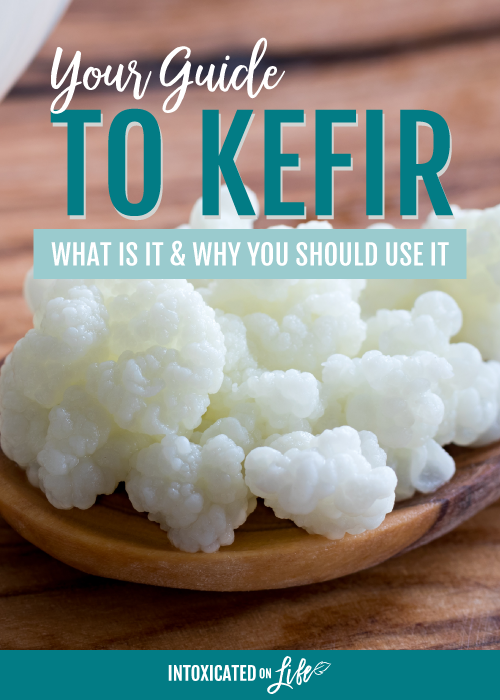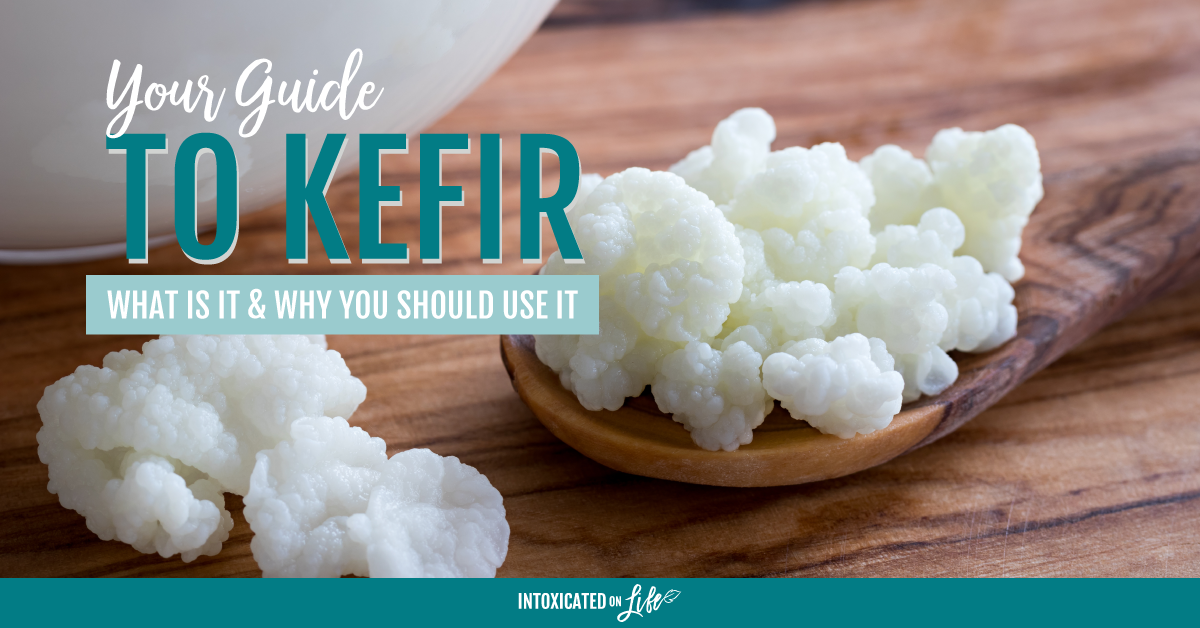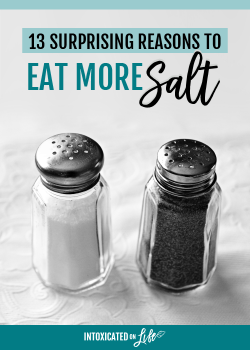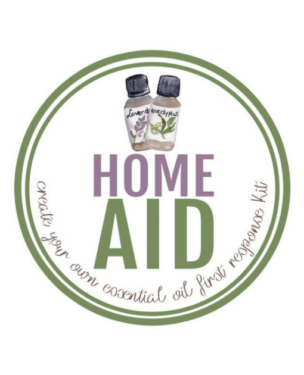The first time I heard about “kefir,” I thought someone was talking about the actor who played on the TV show 24. (Turns out, its a totally different spelling and has no relation to the drink I’m writing about now.) As I learned more, I found out it is not only delicious, but nutrition-packed drink that’s super easy to make myself.

What is Kefir?
Kefir is a probiotic drink that is made using kefir grains—which are not really “grains,” but a combination of yeast and bacteria in a symbiotic relationship.
Sounds yummy, right? Stay with me!
Two Types
Making and maintaining kefir is quite easy. The grains can be re-used from batch to batch and can last indefinitely—because what’s you’re passing from batch to batch are living organisms the are multiplying all on their own.
There are two types of grains: milk and water.
Milk grains look like little cauliflower florets and metabolize lactose found in cow, goat, or coconut milk.
Water grains look like little gel crystals and metabolize the sugars in sugar water. Water kefir is good if (a) you are lactose intolerant, or (b) you want a lighter beverage than what the milk variety provides.
Benefits of Kefir
Both types are nutrient-rich drinks full of beneficial acids and microorganisms. There is a high concentration of enzymes, vitamins A, B2, B12, K, D, phosphorus, nitrogen, and more.
Kefir drinks are known to help cleanse the system and aid digestion, and may help with a long list of conditions including psoriasis, gastritis and arthritis. (Be sure to learn more about the benefits of fermented foods and beverages!)
Comparing Water and Milk Kefir
Milk kefir has been around a lot longer than the water variety. You can even find it at grocery stores now if you’d like to try it before buying cultures. The drink is like a thin yogurt and has a strong fermented taste that intensifies the longer it is left to culture. Milk kefir is most often used for milk-based smoothies and as a substitute for buttermilk and yogurt in many recipes. It is not generally something people drink on its own.
Water kefir is a good choice for those who need to avoid dairy. It has a slightly lower concentration of the beneficial nutrients and enzymes. However, it has a more pleasant taste than milk kefir and is often consumed on its own or flavored with fruit juices. Being slightly fizzy and having a sweet, light taste, it is a great substitute for soda and flavored waters.
Our Experience With Kefir
We used milk kefir in our home for a few years and loved it. Our goal was to increase the amount of probiotics we consumed as a family. We used it primarily in green smoothies and fruit smoothies. Although I’d have to sweeten it for my kids, that wasn’t too hard with a bit of honey, bananas, or dates.
When my husband showed signs of lactose intolerance, we cut down significantly on the amount of dairy in the home. Milk kefir is actually reported to help with lactose intolerance, but I was more concerned with avoiding temptation. That man likes a big glass of milk!
I reluctantly gave my grains to a friend and then begged water grains off of another friend. We have been enjoying water kefir and use it primarily as a beverage on its own or with some fruit juice. We love it!
How Do You Make Kefir?
This drink is relatively easy to start and maintain. You simply need to get some grains and begin making batches! You can keep the grains from batch to batch and, if properly cared for, will last indefinitely. Keep your eye on Intoxicated on Life for a tutorial on how to make your own kefir at home!
Sources and Additional Information
- What You Need to Know About Kefir from About.com Alternative Medicine
- Milk Kefir versus Water Kefir from Cultures for Health
- Milk or Water, Definitely Kefir from Your Kefir Source
- How to Brew Water Kefir from Nourished Kitchen











I’ve never been successful with making kefir; I tried making milk kefir a few years ago. Now, I buy it from Trader Joe’s whenever I’m recovering from a virus to rebuild my immune system.
Hi Barbara! Coming up soon on Intoxicated on Life is a how-to for making kefir. Perhaps that will give you some ideas for making successful batches! Either way, I’m glad we can buy it in stores nowadays too. It’s a nice option especially if we don’t want to maintain a culture ongoing but just want to drink it when we are recovering from illness as you said.
I’ve been making raw milk kefir for a coule of months now. I love it and now drink it straight up. Haven’t had any issues with my grains. In fact they are quite the prolific things. Splitt them many times already. Many sources say to rinse them in water before starting a new batch of kefir. Doesn’t make any sense to me. Use them straight from jar to jar. Keep all the bacteria healthy and robust. Works very well for me. I love it.
I never rinse mine either Audrey. I agree – why bother! Thanks for stopping by!
We LOVE water kefir in our home! I have really seen a difference in fighting illnesses when we are all drinking it. Our grains have lasted for over 2 years, and even multiplied to share with a few friends. The first time we made we it I used fresh lemon juice so it is now always referred to as “lemonade” in our home:)
Thanks for hosting! This week I am excited to share my post about a new Facebook group for teens with food restrictions. Have a great week!
http://edibleattitudes.com/2013/12/09/facebook-group-for-teens-with-food-restrictions/
Thanks so much!! I found your blog via pinterest & I love it. I LOVE kefir. I am going to try making my own – I had never thought to make my own. (duh!)
I posted a link to your post on my Fitness/Wellness FB page – come stop by & say hello.
Happy New Year!
xo- kristen